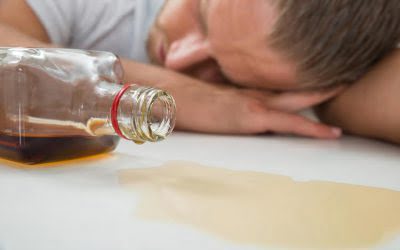The multifaceted disorder needs a multifaceted conceptualization, and we find that in the biopsychosocial model of addiction (Marlatt & Baer, 1988). Rather than pinpoint the one thing that causes addiction, we now understand that a constellation of factors contributes to a person being more or less at risk for addiction. The prevalence of dual diagnosis among the Indian population has been shown to be as high as 60% alcohol and opioid dependent patients52. It is essential to screen patients for psychopathology such as psychotic symptoms, mood and anxiety symptoms, and other specific psychiatric disorders such as eating disorder, sexual dysfunction that impact the diagnosis and management.

Share this article
- Among other things, wayward discourse has sown disruptive conceptual instability in certain lines of medical research and also created a potentially dangerous new vector of medicalization in society.
- Treating it as such has created an epistemic void that has produced the wayward form of BPSM discourse described here.
- These factors include socio-demographic characteristics, neuropsychological functions, psychiatric co-morbidities, psychological vulnerabilities such as personality traits, motivation, and cognitions related to drug use, and the psychosocial functioning of the individual and his family.
- It is important to note that what is at stake here is not just our usage of the term “disease” per se.
- Despite having differing theories about the root causes of substance use disorders, most researchers would agree that substance abuse is, to some extent, a learned behavior.
Therapeutic communities are a sub-set of drug-free, residential drug treatment programs. They are highly supervised and structured environments which combine medical, psychological and peer support, with meaningful work activities and therapeutic groups. Initially, residents have minimal contact with external networks as they develop peer relationships and life skills, a positive daily routine and work ethic, and an understanding of their own individual needs. Utilising ‘the community’ as the method or agent of change, TCs comprise a number of stages that individuals work through, leading to increasing self-responsibility, privileges, and responsibility to others. Compared to other types of residential rehabilitation programs, residents in a TC are given greater responsibility for the management and operation of the community, and for providing mutual support and feedback.
Associated Data
For example, Engel argues at one point that, in schizophrenia, “conditions of life and living… [and] psychophysiologic responses to life change may12 interact with existing somatic factors” to shape the onset and severity of “the manifest disease” (Engel 1977, 132). The presumptive somatic and physiologic factors in schizophrenia are unknown according to Engel, and “life” is an all-encompassing category. A sound causal explanation cannot invoke unknown/conjectured factors and all-inclusive categories. However, since Engel makes these claims while still in the epistemically-uncharted territory of “illness” and “human experience,” there is nothing internal to the discussion itself that clearly rules them out. Engel’s concept-shifting maneuvers thus create a discursive space in which there appear to be few checks on the causal claims one can make about disease and illness. It is important to note that what is at stake here is not just our usage of the term “disease” per se.
Psychological Aspects
Is CEO of Odyssey House Victoria, though was not involved in data collection or analysis. Conceptualization P.K.S., S.G.; methodology P.K.S., S.G., A.J.L.; formal analysis Top 5 Advantages of Staying in a Sober Living House P.L. Writing—original draft preparation P.K.S., P.L.; writing—review and editing A.J.L., S.G.; project administration A.J.L.; funding acquisition, P.K.S. and S.G.
Other ways to access

They are examples of the rationale for expanding the BMM to the BPSM, in effect contributing content to the concept of ‘biopsychology’ or ‘psychological medicine’ within the BPSM. High levels of interdisciplinarity require a unified theoretical perspective and integration around shared themes and questions (Boden, 1999; Committee on Facilitating Interdisciplinary Research, 2004; Strijbos, 2010). For the BPSM, shared themes and questions are straightforwardly specifiable about the causes and cures of illness. The substantial task for the BPSM is to explicate a unified theoretical perspective and integration across the three relevant sciences.
- The fact that it cannot explain all aspects of illness proves nothing in particular.
- The activities varied from ordinary jobs and work training to activities like yoga and self-help groups for people with mental health and substance use problems.
- Instead of simply examining physical symptoms of illness, the BPS uses a multidimensional, holistic approach to explore a patient’s biological, psychological and social dimensions of suffering that affect health outcomes.
- In particular, wayward discourse has created certain disease construct dysfunctions that may have helped undermine certain lines of medical research.
Some lived in apartments provided by social services, while others owned their houses. These informants experienced several demanding challenges after inpatient treatment. They talked about the use of substances as isolated incidents or a more regular https://marylanddigest.com/top-5-advantages-of-staying-in-a-sober-living-house/ occurrence. Almost all the informants started the conversation talking about substance use after discharge from inpatient treatment in Tyrili. Except for one informant, all the informants had used substances after they left inpatient treatment.
- Addiction tends to run in families, and certain types of genes have been linked to different forms of addiction.
- It does this by switching on brain circuits that make you feel wonderful, which then motivates you to repeat those behaviors.
- Interviews were conducted by one of four researchers with post-graduate qualifications in psychology.
